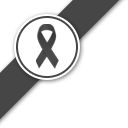- This topic has 24 replies, 16 voices, and was last updated 1 month, 3 weeks ago by
 Jenny Bituin.
Jenny Bituin.
-
AuthorPosts
-
-
2025-10-01 at 2:54 pm #51013
 Lokachet TanasugarnKeymaster
Lokachet TanasugarnKeymasterThink about dengue…
1. How can surveillance help to detect and control the disease?
2. Should we conduct active or passive surveillance or both for the disease, why?
3. Which method should be best to identify cases, why?
a. Cases in medical facilities VS community
b. Sentinel VS population-based surveillance
c. Case-based VS aggregated surveillance
d. Syndromic VS laboratory-confirmed surveillance
4. What dissemination tools will you choose to disseminate monkeypox surveillance information? Why do you choose this/these tools?
-
2025-10-06 at 3:48 pm #51169
 Than Htike AungParticipant
Than Htike AungParticipant1. How can surveillance help to detect and control the disease?
Surveillance can identify unusual increases in dengue-like illnesses, track seasonality, hotspots and high-risk populations for early detection of outbreak.
So that, it can trigger timely vector control interventions (such as fogging, larvicide application and community clean-up), resource allocation and monitoring.2. Should we conduct active or passive surveillance or both for the disease, why?
We should conduct both types of surveillance for the disease. Because passive surveillance is cost effective, sustainable, wide coverage and good for long term monitoring. Its limitations are covered by active surveillance such as early detection of outbreaks and capture missed cases.
3. Which method should be best to identify cases, why?
a. Cases in medical facilities VS community
Cases in medical facilities are the best to identify because dengue, especially severe dengue, often requires medical attention, making healthcare facilities the most practical and effective source for case identification.b. Sentinel VS population-based surveillance
Sentinel surveillance is the best because it is cost-efficient and provide high quality detailed data.c. Case-based VS aggregated surveillance
Case -based surveillance is the best way to identify due to outbreak nature of disease for contact tracing and hotspots mapping.d. Syndromic VS laboratory-confirmed surveillance
Syndromic is the best to identify the case because it is fast, best for early outbreak detection and most of the cases are diagnosed clinically. Laboratory confirmed surveillance is only required for definitive, accurate diagnosis and disease classification.4. What dissemination tools will you choose to disseminate monkeypox surveillance information? Why do you choose this/these tools?
Public Health Authority Website/Dashboards: It provides a single, authoritative source for the public and media. Interactive dashboards (showing case counts, geographic distribution, trends) promote transparency and allow for real-time updates.
Epidemiological Reports: These are the primary tools for public health professionals and policymakers. They provide detailed analysis, risk assessments, and recommendations for action, which is necessary for informed decision-making and resource planning.
Press Releases and Social Media Updates: To ensure accurate information reaches the broader public through traditional media channels, broad-reach public communication, especially to target vulnerable or high-risk groups. Social media allows for the quick sharing of simple, graphic-based messages about symptoms, prevention (vaccination, risk reduction), and addressing misinformation and stigma in real-time.
Health Information Exchange Systems (e.g., SMS alerts, closed electronic systems): Crucial for rapid notification to healthcare providers (hospitals, clinics, laboratories) about case definitions, testing protocols, treatment guidelines, and high-priority alerts regarding new clusters. This ensures frontline staff are prepared and follow correct procedures.
-
2025-10-09 at 2:14 pm #51246
 Siriluk DungdawaduengParticipant
Siriluk DungdawaduengParticipantHi Than Htike Aung, thank you for sharing your thoughtful insights. I agree with your points especially that combining both active and passive surveillance provides a balanced approach for effective dengue control, and that sentinel and case-based surveillance ensure high-quality, detailed data for early outbreak detection. I also support your idea of using public dashboards and epidemiological reports, as they enhance transparency, timely communication, and evidence-based decision-making. Thank you.
-
2025-10-10 at 3:35 pm #51260
 Lokachet TanasugarnKeymaster
Lokachet TanasugarnKeymasterThank you for your insightful answer. From this discussion, you could see that having a surveillance system in place helps monitoring the disease situation and hopefully alert potential outbreak for early intervention. The details of each surveillance system tend to vary based on several factors as mentioned in the lecture – including the nature of that particular disease. This sort of consideration also extend to the design of each system and the system evaluation that will be covered in our subsequent weeks.
Keep up the good job!
-
-
2025-10-07 at 8:54 pm #51197
 Wah Wah LwinParticipant
Wah Wah LwinParticipant1. How can surveillance help to detect and control the disease (Dengue)?
Surveillance plays an essential role in detecting and controlling dengue outbreak by enabling early identification of unusual increases in dengue cases, allowing health authorities to respond quickly (by collaboration with different sectors such as clinical setting, public health setting, environmental health setting) before the disease spreads widely. Through continuous monitoring of disease patterns, surveillance system can track trends in dengue incidence, identify high-risk areas, and detect clusters of infection that signal potential outbreaks.
2. Should we conduct active or passive surveillance or both for the disease (Dengue), why?
We should conduct both passive and active surveillance for Dengue. Passive surveillance collect reports from health facilities, while active surveillance involves targeted investigation and case finding in communities. Conducting both would provide early detection and timely responses on Dengue outbreaks.
3. Which method should be best to identify cases (Dengue), why?
3.1: Cases in medical facilities VS communityIdentifying dengue cases through both medical facilities and the community is the best option. However, in resource limited setting, community-based surveillance is more effective for dengue detection. This is because mild dengue cases may not reach hospitals or clinics, and some symptoms may disappear without severe clinical signs and symptoms. Community surveillance helps detect these unreported infections, giving the transmission trend in the area. However, data from health facilities are also important for confirming severe cases and guiding medical response. Therefore, a combined approach ensures early detection and better control of dengue outbreaks.
3.2: Sentinel VS population-based surveillance
For dengue, sentinel surveillance, using selected health facilities or locations, works best in many settings, especially where resources are limited. Sentinel surveillance can provide detailed, high-quality data on trends of the disease without requiring the large effort of population-based surveillance. Although population-based systems give broader coverage, they are costly and need to use extra human resources. Sentinel surveillance, when well chosen in high-risk areas, can offer timely response that helps target prevention and vector control measures more effectively.
3.3: Case-based VS aggregated surveillance
A case-based surveillance is better for dengue detection and control. Collecting data for each individual case, including personal, and geographical information, allows for rapid investigation of clusters, understanding transmission trend, and implementing targeted interventions. Aggregated data, while simpler to manage, lacks the detail needed to trace outbreaks or identify hotspots accurately. As Murray and Cohen (2017) note, case-based surveillance is particularly useful for disease outbreak and require quick public health responses.
3.4: Syndromic VS laboratory-confirmed surveillance
In dengue surveillance, both are important. Syndromic surveillance provides early detection and laboratory confirmation provides disease verification. Since dengue often presents with fever and flu-like symptoms, monitoring these symptoms can provide an early warning before lab confirmation is available. As per Murray & Cohen (2017), combined approach (Syndromic for early detection followed by lab-confirmed surveillance) provides fast and accurate response in managing dengue outbreak.
4. What dissemination tools will you choose to disseminate monkeypox surveillance information? Why do you choose this/these tools?
For disseminating monkeypox surveillance information, I would choose real-time online platforms, along with regular epidemiological reports (such as weekly, bi-weekly, etc.) and communication channel (such as social media, SMS) to the general public. Real-time tools are very important because monkeypox can spread quickly through travel and close contact, so immediate sharing of verified information helps health authorities and the public respond quickly to prevent further transmission. At the same time, regular epidemiological reports provide detailed updates (such as trend analysis, disease data, future plan for disease control, research purpose, etc.) for policymakers and health professionals for decision making. Dissemininating the disease status and alerts to the general public is also essential for their awareness and preventive measures.
-
2025-10-14 at 3:14 pm #51329
 Hteik Htar TinParticipant
Hteik Htar TinParticipantThanks for your insightful discussion, Ama. As the communication pattern of dengue is changing, the population-based surveillance can produce attack rate among the patients and suitable for nationwide surevillance. The community has awareness about the dengue, like you mentioned above, the community can activitely participate in case findings.
-
-
2025-10-08 at 4:07 pm #51217
 Siriluk DungdawaduengParticipant
Siriluk DungdawaduengParticipant1. How can surveillance help to detect and control the disease?
I think surveillance helps us detect outbreaks early, keep track of how diseases spread, and plan better public health actions. It also shows where diseases are more common, which groups are most at risk, and whether things like mosquito control or vaccination programs are working well.
2. Should we conduct active or passive surveillance or both for the disease, why?
I think we should use both approaches together. Passive surveillance is cheaper and good for regular monitoring since it uses reports from hospitals or clinics. But during outbreaks, active surveillance is really important because it helps find cases that don’t go to health facilities and gives more accurate data. So, combining both methods would give us better coverage and help detect more cases.
3. Which method should be best to identify cases, why?
Laboratory-confirmed vs. Syndromic surveillance
I think lab-confirmed surveillance is more reliable since it gives accurate diagnosis. Syndromic surveillance is useful for early warning, but it’s not specific — it might include other illnesses. The best way is to use syndromic for quick alerts and confirm by lab later.Cases in medical facilities vs. community
Hospitals usually detect moderate to severe cases with full clinical data, while community surveillance can find mild or hidden cases. Combining both gives a better picture of disease spread and burden.Sentinel vs. Population-based surveillance
Sentinel sites are good for trend monitoring and save resources, but they may not represent the whole population. Population-based surveillance gives more complete data and helps estimate true incidence very useful for dengue in endemic areas.Case-based vs. Aggregated surveillance
Case-based data show individual details like age and location, which help in outbreak investigation. Aggregated data show only totals or trends. For dengue, case-based is better for targeted control.What dissemination tools for monkeypox surveillance information, and why?
I’d go with a mix of platforms.
– First, Health Alert Networks (HAN) are great for quick communication with doctors and public health teams.
– Then, online tools like ProMED or HealthMap give real-time global updates and maps — super useful for tracking outbreaks.
– Official government websites are important too since the data there are verified.
– And finally, social media helps spread information fast and raise public awareness.-
2025-10-15 at 10:48 pm #51381
 Jenny BituinParticipant
Jenny BituinParticipantThank you for sharing. I agree, government websites are important because it provides official and reliable information.
-
-
2025-10-10 at 1:30 pm #51259
Salin Sirinam
ParticipantFor dengue scenario:
1. How can surveillance help to detect and control the disease?
– Surveillance helps detect dengue by monitoring trends and signals of dengue cases in the target area, resulting in an appropriate response when any change is found, e.g. increasing acute febrile illness suggesting dengue infection. It not only helps in early detection and outbreak response, but also helps evaluate the interventions after they are implemented to control the spread of dengue.2. Should we conduct active or passive surveillance or both for the disease, why?
– We should conduct both for dengue where appropriate. Passive surveillance should be used for routine monitoring in health centers since it requires fewer resources. Active surveillance should be added during the outbreak or peak season or clusters to help collect more detailed information for further intervention and control.3. Which method should be best to identify cases, why?
Cases in medical facilities VS community
Sentinel VS population-based surveillance
Case-based VS aggregated surveillance
Syndromic VS laboratory-confirmed surveillance
– While it should depend on context, objectives, and available resources. I am not sure about this objective of best identifying CASES (which can be done with case-based medical centers, sentinel coverage, and a lab-confirmed approach).However, if based on dengue surveillance in limited-resource settings but still aiming for effective disease control, the most appropriate approach could be medical facility-based, population-aggregated, and syndromic-confirmed surveillance.
Medical facility-based method is practical since most clinically significant dengue cases will eventually present at health centers, while the community-based method costs more. For public health control, identifying asymptomatic cases is less critical since the preventive measures can be applied when a signal of the outbreak is detected.
In terms of scope and coverage, population-based surveillance can be used to identify the high-risk area. Aggregated method are suitable for continuous routine surveillance since it is cheaper, while case-based methods can be used during outbreak clusters for detailed investigation.
Lastly, syndromic approach is fast and appropriate for early warning and timely response, with laboratory confirmation that can be added on a subset of cases to verify and provide more detail.4. What dissemination tools will you choose to disseminate monkeypox surveillance information? Why do you choose this/these tools?
– For dissemination of Mpox surveillance information, I would prioritize real-time dissemination tools because the disease requires rapid alert and awareness among health professionals and public health authorities. Periodic dissemination tools can be used later for formal documentation, trend monitoring, and reporting and evaluating the interventions -
2025-10-11 at 12:14 am #51264
Wai Phyo Aung
Participant1. How can surveillance help to detect and control the disease?
Surveillance is the effective method to detect case early because late identification may cause serious impact in dengue. It is highly infectious disease and can be public emergency condition. A good surveillance system can detect the cases and help to develop control measures as well.2. Should we conduct active or passive surveillance or both for the disease, why?
Active surveillance is the best option to control the disease because the disease is transmissible by mosquitos and can not wait to report the case to health facility. It will be late and outbreak will occur if we do not find the case actively in the community and do not conduct control measure like vector control, precautions.3. Which method should be best to identify cases, why?
Syndromic identification will be effective way to verify the case in active case detection. Health staff can easily confirm by checking common symptom of dengue in the community.a. Cases in medical facilities VS community
Case finding in community is the more effective method because there might be hidden case or incubation period in the community. Health staff can track by tracing contact history or detected place.b. Sentinel VS population-based surveillance
Population-based surveillance is the better choice to control the highly transmittible diseases because it can easily spread within community in the short time frame. The surveillance system should cover the whole population.c. Case-based VS aggregated surveillance
Case-based surveillance is also important in dengue cases because it is helpful to conduct control measure based on geographical area, family members, travel history, age, contact tracing and vector control.d. Syndromic VS laboratory-confirmed surveillance
Syndromic is quick and effective to report the suspected cases to facility. The further confirmation test can be conduct in the facility.4. What dissemination tools will you choose to disseminate monkeypox surveillance information? Why do you choose this/these tools?
Ongoing and real time dissemination tools is the good choice to share information faster within the health staff. It is not only hospital cases but also public health alarming. The case information should be shared interoperability between public health intervention workers and hospital care units.-
2025-10-13 at 5:35 pm #51314
 Myo OoParticipant
Myo OoParticipantThanks so much for sharing, Ahko.
I agree with your points. Just to share my idea.
In the context of resource-limited settings like the EHO area, active surveillance can be a bit challenging and costly. Maybe we could do regular monitoring through weekly aggregated dengue reports. Once the cases reach a threshold level or events are reported from the communities, health workers could go to the sites for active case finding. What do you think?-
2025-10-15 at 12:24 am #51339
Wai Phyo Aung
ParticipantDear Bro,
Thanks for sharing your opinion! It makes sense and agree that we could start ACF to the community when the cases reach the point of threshold level.
-
-
-
2025-10-11 at 4:01 pm #51278
 Soe Wai YanParticipant
Soe Wai YanParticipant1. How can surveillance help to detect and control the disease?
The surveillance can help:
_The early detection of outbreaks: Continuous monitoring can help to identify unusual case cluster or new geographic spread that allow the rapid containment and vaccination or isolation measures.
_For understanding epidemiology: It can provide data on incidence, risk groups, transmission routes and reservoir patterns that are essential for targeted interventions and public health messaging.
_The monitoring trend and impact: It can assess the effectiveness of control measures and detect the re-emergence.
_The detection of mutation and resistance: Laboratory-based surveillance can identify new viral strains or changes in virulence.2. Should we conduct active or passive surveillance or both? Why?
We should conduct both. The passive surveillance can provide ongoing monitoring at low cost and can identify background incidence trend. The active surveillance is essential during outbreak to detect every case and interrupt transmission that is especially for an emerging or re-emerging disease.3. Which method should be best to identify cases, why?
a. The medical facility vs community:
We should practice both but priority should depend on outbreak context. The severe cases often present to medical facilities and so hospital-based reporting can efficiently detect serious infections. However, mild cases may stay in the community especially in resource-limited or rural and hard to reach area.
b. The sentinel vs population-based surveillance
The sentinel surveillance is efficient for early outbreak detection and monitoring trend and population-based surveillance can give more generalize incidence data of the population although it is costly.
c. The case-based vs aggregated surveillance
The case-based surveillance should be prioritized while it can collect detailed information on each case. The aggregate system can only count the number of case and cannot support detailed outbreak investigation.
Monkeypox requires case-based surveillance to understand transmission, contact and vaccination status.
d. The syndromic vs laboratory-confirmed surveillance
The syndromic surveillance allows rapid alerts in the field. Laboratory confirmation can ensure diagnostic accuracy and monitoring of viral strains. The combined use of syndromic surveillance for early detection and lab confirmation for verification should be done for outbreak-prone disease.4. What dissemination tools will you choose to disseminate monkeypox surveillance information? Why do you choose this/these tools?
a. The periodic tool: The weekly or monthly surveillance reports to inform health authority, partner and clinician.
b. The real-time tool: Event-based and online platform such as health map to share rapid alerts and outbreak locations. The mobile dashboard and map for real-time visualization and data sharing between local stakeholder enable faster dissemination, public awareness and coordinated response. -
2025-10-12 at 1:26 am #51283
 Sirithep PlParticipant
Sirithep PlParticipantHi everyone,
In this discussion, surveillance for dengue is important to detect and control the disease. I will discuss the following by questions.
1. How can surveillance help to detect and control the disease?
Surveillance plays a critical role in dengue control through:
– Early detection of outbreaks: Timely identification of increased case numbers allows for rapid implementation of vector control measures (fogging, larviciding, community mobilization).
– Monitoring trends helps track seasonal patterns and transmission hotspots, guiding targeted interventions.
– Identifying high-risk areas and populations enables more efficient resource allocation.2. Should we conduct active or passive surveillance or both for the disease, and why?
– Ideally, using them is the best. For this reason, passive surveillance will give ongoing baseline data, while active surveillance helps with early detection during high-risk periods. This combined approach maximizes sensitivity and timeliness.3. Which method should be best to identify cases, and why?
a. Cases in medical facilities vs. community
– Community can capture mild or unreported cases, more sensitive for outbreak detection, especially during high transmission periods.
b. Sentinel vs. population-based surveillance
– Sentinel surveillance can involve selected health facilities or sites; cost-effective, allows for detailed data and lab confirmation. It is more feasible and efficient for dengue, especially in resource-limited settings
c. Case-based vs. aggregated surveillance
– Case-based surveillance is preferred for dengue because it allows early detection of clusters, tracking of transmission chains, and better response planning.
d. Syndromic vs. laboratory-confirmed surveillance
– Syndromic surveillance based on clinical symptoms (e.g., fever, rash, arthralgia) is preferred for early detection. This surveillance is faster, less expensive, but less specific than laboratory-confirmed surveillance.4. What dissemination tools will you choose to disseminate monkeypox surveillance information? Why do you choose this/these tools?
I thought the question was probably still scope of dengue surveillance. For disseminating dengue surveillance information, I would use a combination of tools to reach different audiences effectively:
– Online dashboards allowed real-time visualization of case numbers, trends, and hotspots, which helps in quick interpretation and action.
– Press releases and social media ensured the public received clear, accurate, and timely information to raise awareness and encourage preventive behavior.
The reason is that using multiple tools ensures both technical stakeholders and the general public receive the right information quickly, accurately, and in an accessible format, which is essential for effective dengue control. -
2025-10-13 at 5:23 pm #51313
 Myo OoParticipant
Myo OoParticipant1. How can surveillance help to detect and control dengue?
Surveillance helps us know disease trends, seasonal patterns, geographic spread and vulnerable groups. This information is useful for planning actions like vector control or vaccination. Surveillance monitors trends to track changes in incidence and evaluate the impact of interventions. Most importantly, it can detect outbreaks early. Surveillance data can inform health authorities and stakeholders, both locally and across borders for timely coordinated action. When we find an outbreak quickly, we can respond fast and stop the disease from spreading.2. Should we conduct active or passive surveillance or both for the disease, why?
Passive surveillance means health facilities report cases to authorities. It is cheaper and easier but often misses mild or unreported cases. Active surveillance means health workers look for cases in communities. It finds more cases but costs more and needs more staff. The best way is to use both. Passive surveillance for regular monitoring and active surveillance during outbreaks or in high-risk areas.3. Which method should be best to identify cases, why?
a. Medical facilities vs community
Hospitals and clinics are good for finding severe cases, but they miss mild cases and people who cannot access care. Community surveillance finds these cases and is useful for outbreak control. For dengue, using both is best.
b. Sentinel vs population-based
Sentinel surveillance uses a few selected sites. It gives good quality data but cannot show incidence rates. Population-based surveillance covers all facilities in an area and gives incidence rates, but it is expensive. For dengue, sentinel sites are good for trends and virus types, while population-based is better for national burden.
c. Case-based vs aggregated
Case-based surveillance collects details for each case, which helps in outbreak investigation. Aggregated data only shows total numbers and is easier for routine reporting. For dengue, case-based is better during outbreaks; aggregated is fine for regular monitoring.
d. Syndromic vs laboratory-confirmed
Syndromic surveillance uses symptoms like fever and rash. It is fast but not very accurate. Laboratory-confirmed surveillance is accurate and shows virus types, but it takes more time and resources. For dengue, start with syndromic for quick alerts and confirm with lab tests.4. What dissemination tools will you choose to disseminate monkeypox surveillance information? Why do you choose this/these tools?
Monkeypox needs fast communication because it can spread quickly. I would use:
Weekly or monthly reports for detailed updates to health authorities.
Dashboards for the health autorities and general public.
Cross-border coordination meetings and working groups for real-time sharing.
Online platforms like ProMED or HealthMap for real-time alerts and global sharing.-
2025-10-14 at 9:36 pm #51332
 Yin Moe KhaingParticipant
Yin Moe KhaingParticipantCombining medical facility data with community-based surveillance ensures that both severe and mild or unreported cases are captured. Sentinel surveillance is useful for monitoring trends and virus types, while population-based data provide the true disease burden. Thanks for discussion Myo!
-
-
2025-10-14 at 12:18 am #51318
 Myo ThihaParticipant
Myo ThihaParticipant1. How can surveillance help to detect and control the disease?
For dengue, surveillance helps to detect and control the disease in terms of early outbreak detection by monitoring the disease patterns, highlighting outbreak areas, and enhancing resource allocation. This surveillance enables responding to the outbreak early and controlling the disease with the efficient use of resources.2. Should we conduct active or passive surveillance or both for the disease, why?
Active surveillance will enable early case detection and control, but may have limitations in resources to be sustainable in large areas over long periods. So, passive surveillance will fill the sustainability gap, but in some cases, like mild cases, it can be missed. In dengue, a mixture of both surveillance methods should be conducted.3. Which method should be best to identify cases, why?
a. Cases in medical facilities VS community
Medical facility-based surveillance can capture moderate and severe cases but can miss mild cases. If the objective is to estimate total burden, community-based methods are more effective. However, we should opt for a combined approach, considering resource limitations.b. Sentinel VS population-based surveillance
Sentinel surveillance should be used, taking into account cost efficiency and higher data quality.c. Case-based VS aggregated surveillance
For dengue, I would favor case-based surveillance for detailed information collection per case, like demographic, location, time, etc. This data enables epidemiological analysis.d. Syndromic VS laboratory-confirmed surveillance
We should be used to syndromic surveillance for early detection in resource-limited areas. Laboratory-confirmed surveillance may take more time and be more costly.4. What dissemination tools will you choose to disseminate monkeypox surveillance information? Why do you choose this/these tools?
For the dissemination of monkeypox surveillance information, I would choose the following tools:
Dashboard: A national online surveillance information dashboard with interactive features will be applied by highlighting case numbers, geographical distribution, and trends. This enhances the real-time surveillance system and tracking of monkeypox.
Alert system: If an outbreak is detected, send an alert to relevant stakeholders. This will enable early warning and response.
Social media: I will use social media to inform the public about monkeypox risk, symptoms, preventive behaviors, and where to seek care. This will promote awareness in communities.
Report: For deeper analysis, I will develop a technical report and article to advocate for policymakers.
Report submission for international surveillance system: I will send the report via platforms such as WHO and ProMED, ensuring global visibility and allowing comparison with the data from other countries -
2025-10-14 at 9:07 pm #51330
 Hteik Htar TinParticipant
Hteik Htar TinParticipant1. How can surveillance help to detect and control the disease?
Surveillance is the ongoing, systematic collection, analysis and interpretation of health data. So, healthcare professional can timely detect the abnormal dengue cases distribution pattern through ongoing data collection and careful monitoring of its trend, it can help to respond the dengue infection before their epidemic peak level in the community.
2. Should we conduct active or passive surveillance or both for the disease, why?
For routine dengue surveillance system, we conduct passive surveillance focusing on data completeness and reliability of the reported cases, e.g. dengue is one of the notifiable diseases surveillances
As dengue is highly infectious vector borne diseases, active surveillance must do because public health staff engage actively in the system and can take prompt action for the detected cases in the community level, e.g. Hess test for every fever patient
If there is potential outbreak signal from passive surveillance, active surveillance must follow in the system to find the symptomatic patients and their contact tracing to prevent public health emergency, e.g. preventive measures for population and vector control activities
3. Which method should be best to identify cases, why?
1) Cases in medical facilities VS community
To identify cases, indicator-based surveillance is more specific to detect the signs and symptoms of dengue. After setting case definition, laboratory confirmation is required. So, cases in medical facilities should be the best compared to community.
2) Sentinel VS population-based surveillance
Sentinel should be the best to identify the cases. After getting data from medical facilities, we can start sentinel surveillance by doing line listing from the patients and start contact tracing. As dengue is vector borne diseases, the infection will be spread according to the vector’s habitat.
3) Case-based VS aggregated surveillance
Case-based surveillance is the best because it can detect the age cohort, it can get detail information of patient and line listing. But it is not suitable for large spreading condition.
4) Syndromic VS laboratory-confirmed surveillance
Laboratory-confirmed surveillance should be the best, because dengue needs to be confirmed from other fever with rash cases. The reliable antigen detection are now feasible and we can start vaccination for prevention.4. What dissemination tools will you choose to disseminate monkeypox surveillance information? Why do you choose this/these tools?
I will choose ongoing real-time dissemination tool to disseminate the current monkeypox surveillance information in epidemic regions. Because monkeypox infection requires rapid public health intervention. We can detect geographical distribution and caseloads in timely manner and develop alerts immediately to the public.
For worldwide, I will choose periodic dissemination tool to do advance research and innovation for vaccines and treatment intention.-
2025-10-14 at 9:38 pm #51333
 Yin Moe KhaingParticipant
Yin Moe KhaingParticipantI agree that continuous data collection and monitoring are essential for early detection and timely response before the disease reaches epidemic levels. Using both passive and active surveillance is a smart approach—passive for routine monitoring of notifiable cases and active for rapid community-level intervention when there are outbreak signals. Thanks for your discussion, Ma Hteik Htar!
-
-
2025-10-14 at 9:33 pm #51331
 Yin Moe KhaingParticipant
Yin Moe KhaingParticipantInfectious disease surveillance serves three critical goals for managing public health threats like dengue, a disease listed as nationally notifiable in the United States. The surveillance system aims to describe the current burden and epidemiology (including seasonality and age distribution) to justify interventions, monitor disease trends (including the impact of control measures), and identify outbreaks and new pathogens. For an outbreak-prone disease like dengue, ongoing surveillance facilitates the early detection of an outbreak, enabling a rapid public health response. While passive surveillance, where medical professionals report cases, is commonly implemented because it requires fewer resources, it is prone to missing cases. Therefore, for a complete and responsive system, passive surveillance should be complemented by active surveillance during an outbreak, where public health staff actively engage in searching the community to find symptomatic patients and conduct contact tracing.
To achieve comprehensive case identification, various methods must be employed. Identifying cases in medical facilities captures severe cases requiring hospital treatment; however, community-based surveillance is essential to capture the full burden of disease, including milder cases or those who do not seek health care. Furthermore, population-based surveillance is preferred over sentinel surveillance if the goal is to produce generalizable rates of disease (incidence and mortality rates) across a defined geographic area. To ensure detailed information for investigation and targeted control efforts, case-based surveillance, which collects individual-level data on person, place, and time, is recommended over aggregated surveillance, although systems may temporarily transition to aggregated data if the case volume becomes overwhelming. Finally, an effective case definition strategy should use syndromic surveillance (monitoring clinical symptoms without laboratory confirmation) as a sensitive alert system for suspect cases, followed by laboratory-confirmed surveillance to provide the necessary specificity and definitive identification of the etiologic agent.
For diseases requiring rapid response, such as monkeypox (Mpox), surveillance information must be disseminated quickly as surveillance is an action-oriented public health tool. I would choose real-time and online tools to facilitate rapid intervention. The Health Alert Network (HAN) is vital for quickly disseminating confirmed disease reports and information (including required actions) to medical and public health professionals at a national level. Similarly, the Program for Monitoring Emerging Diseases (ProMED) acts as an important early warning of outbreaks by consolidating and verifying reports from media and observers, disseminating this free information rapidly via email and the Internet. These rapid tools are complemented by periodic dissemination tools (such as surveillance bulletins or the MMWR/ WER), which provide formal, regular summaries of disease trends and case counts to stakeholders. Additionally, online platforms like HealthMap provide an innovative way to display collected data geographically on an interactive interface, enhancing real-time situational awareness.
-
2025-10-14 at 11:41 pm #51338
 Nang Phyoe ThiriParticipant
Nang Phyoe ThiriParticipantHow can surveillance help to detect and control the disease?
As dengue is mosquito-borne infection, transmitted from person to person through the bite of Aedes mosquito, surveillance and control is important.
Using data from surveillance –
1. Preventive measures – We can enforce preventive measures to reduce mosquitoes breed in the environment, to decrease transmission, advise personal protective measures/awareness raising/early signs & symptoms especially in endemic areas.
2. Know the disease burden – to understand the distribution, nature and burden of infection nationally & sub-nationally
3. Monitor trends – we can evaluate the impact of interventions to the spread of infection
4. Detect and respond to outbreaks – early detection and preparedness plans like resource allocation, refresher training to health staff, blood bank alertShould we conduct active or passive surveillance or both for the disease, why?
I think it depends on situations-
1) During routine period – Passive surveillance is enough.
2) During outbreaks and seasonal peaks – Passive surveillance is primary and combines with active surveillance. Passive surveillance through reports is sustainable and cost-effective. But during sentinel outbreak or peaks, sentinel active surveillance is necessary to make timely interventions and preventive measures. Combination of both approaches is important because most of the infection is mild or even asymptomatic, which can be missed if we rely only on passive surveillance.Which method should be best to identify cases, why?
1. Cases in medical facilities VS community
Cases in community because most of the infected cases are asymptomatic or mild, not seeking medical care at facility, which can underestimate the disease burden.
2. Sentinel VS population-based surveillance
Sentinel surveillance because dengue is vector-borne disease and usually spread in community through the bites of infected mosquitoes. Population-based surveillance is more time and resources consuming and may compromise the quality of data.
3. Case-based VS aggregated surveillance
Case-based surveillance for contact tracing, mapping and early outbreak detection and intervention.
4. Syndromic VS laboratory-confirmed surveillance
Lab-confirmed surveillance because it mainly presents with fever & rash which are very non-specific and mimic other viral illnesses. (like influenza, zika, etc.)What dissemination tools will you choose to disseminate monkeypox surveillance information? Why do you choose this/these tools?
Through multi-media to ensure the reach of the information:
Periodic SMS in local language-since most people, including elderly, use mobile phones nowadays. Therefore, I think it ensures everyone gets the health message and alerts.
Facebook– because this is still the most popular online platform in my country.
Television – Dedicated information sessions on TV show and also footnote in popular TV programs.
Electronic dashboard – to disseminate real-time visualization, dissemination an hotspots mapping
By using this combination of approaches, we can ensure that the information is accessible, timely and inclusive.-
2025-10-15 at 2:38 am #51341
 Kevin ZamParticipant
Kevin ZamParticipantThanks for your comprehensive response. I agree with your opinion on using facebook as a dissemination tool.
-
2025-10-15 at 10:18 pm #51378
 Jenny BituinParticipant
Jenny BituinParticipantThank you for sharing. I like your idea of sending SMS in local language, since not all people are always connected to the internet.
-
-
2025-10-15 at 2:35 am #51340
 Kevin ZamParticipant
Kevin ZamParticipantFor dengue…
1. How can surveillance help to detect and control the disease?
It can detect outbreaks early and triggers rapid response (vector control, awareness campaigns) and monitor trends, seasonality, and geographic spread of dengue. Surveillance can help describe burden and risk groups (age, sex, area). It can evaluate the effectiveness of mosquito-control measures and also provide data for policy, planning, and advocacy.2. Should we conduct active or passive surveillance or both for the disease, why?
Both are needed. While passive surveillance by routine reporting from health facilities continues, active surveillance by public health teams for active cases in schools or communities during dengue outbreaks ensures timely detection and response.3. Which method should be best to identify cases, why?
a. Cases in medical facilities VS community (Cases in community because it can capture mild or unreported cases.)
b. Sentinel VS population-based surveillance (Sentinel because it can provide detailed, high-quality data)
c. Case-based VS aggregated surveillance (Case-based to analyze person, place, time and source)
d. Syndromic VS laboratory-confirmed surveillance (Syndromic because it allows early detection)4. What dissemination tools will you choose to disseminate monkeypox surveillance information? Why do you choose this/these tools?
Ministry of Health Dashboard including a hotline number: the best official transparant way to reach communities and raise public awareness of disease including case count, trends and epi data together with social media platform like facebook and tiktok.
Routine periodic tools: are useful for official updates and global reporting with interoperability between clinical and public health data system.
These tools are chosen because monkeypox needs fast and accurate information sharing. Using online and real-time platforms ensures that health professionals and the public receive timely alerts, helping prevent the spread of the disease and improving international coordination. -
2025-10-15 at 7:15 am #51343
 Jenny BituinParticipant
Jenny BituinParticipant1. How can surveillance help to detect and control the disease?
Surveillance can help detect and control dengue by detecting outbreaks in order to initiate timely and effective control measures, monitoring trends of incidence and number of severe cases and deaths, assessing and confirming possibility of outbreaks, and monitoring the impact of control interventions.2. Should we conduct active or passive surveillance or both for the disease, why?
Both active and passive surveillance should be conducted for dengue because we need data from both health facilities reports and from active surveillance since many dengue cases are asymptomatic or mild and self-managed, leading to underreporting of actual number of dengue cases.3. Which method should be best to identify cases, why?
1. Cases in medical facilities VS community
To identify cases of severe dengue, using cases in medical facilities is better because most severe cases were treated in medical facilities. For mild and asymptomatic cases, community is better because these cases are usually not underreported.
2. Sentinel VS population-based surveillance
Sentinel surveillance is best to identify cases of dengue because it provides higher quality and more detailed data.
3. Case-based VS aggregated surveillance
For faster identification of potential outbreaks, aggregated surveillance is better because it collects and analyzes data on group of cases for a specific region and time period. If the goal is to understand disease characteristics, case-based is better because it collects information about each case at the individual level.
4. Syndromic VS laboratory-confirmed surveillance
Syndromic surveillance is better for early detection of outbreaks dengue cases and related health events, allowing for rapid response.4. What dissemination tools will you choose to disseminate monkeypox surveillance information? Why do you choose this/these tools?
I will choose ongoing, real-time dissemination tools such as ProMED because it is free, easily available on the internet, and have a large audience.
-
-
AuthorPosts
You must be logged in to reply to this topic. Login here

